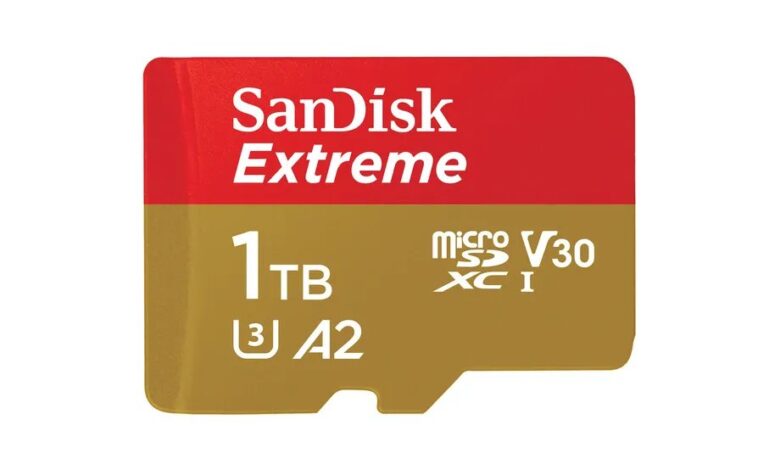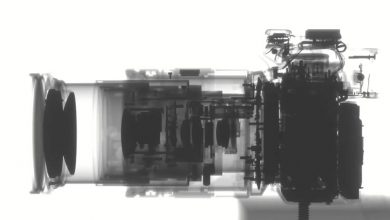How many pictures can the memory card hold?

Focusing on the camera model, lens and external flash unit, you don’t pay too much attention to the usual small accessories like memory cards and batteries. However, when the memory card is full or the battery is low, your expensive camera equipment will become useless and the photo session will be ruined.
Free ebook download: 25 Techniques All Photographers Should Master
Memory cards have two main characteristics: read/write speed and size.
Of course, you want the fastest possible speed and the largest size, but you should be prepared to pay the price. While memory cards are pretty cheap, twice the size means twice the price. Furthermore, most of the time, you empty the card as soon as you have your laptop and store your photos securely using a cloud service or hard disk. So why pay more for a big card that’s still empty? Instead, you should know how many photos a memory card can hold and choose a card size that’s right for your purposes.
Understand the size of the memory card
The size of a memory card is in bytes, a unit of measurement for data storage capacity. The first memory card ever sold was 8MB, which is 8 x 1024 x 1024 bytes. These days you can hardly find a card under 16GB, that is, 16 x 1024 x 1024 x 1024 bytes, a thousand times larger than the first card.
The largest memory card available is 1TB, which is 1024 x 1024 x 1024 x 1024 bytes. It costs almost $500 and not all cameras support it, but you are unlikely to run out of storage space for your photos or videos. SanDisk’s 1TB microSD card is designed primarily for video recording.

Since this is one of the two most important features of a memory card, you can read the dimensions on the front of the card. Can’t miss it.
AFFINITY PHOTO Workflow Video Course
Don’t Worry About Affinity Photo Start Using It Like A PRO
How to choose the best memory card for your camera
Size and speed are not the only parameters that matter. The first thing you must do before buying a memory card is to read your camera specifications and find out the maximum memory card capacity it supports. For example, the Canon EOS 1500D supports 256GB cards, while the Canon EOS 1000D only supports 32GB cards.
So there are differences even between camera models of the same manufacturer. If you need more storage than your camera can handle, buy several small memory cards and take them with you wherever you go. A labeling or sorting system can help you count each card refill history. Make sure you empty the cards when you get the chance.

The choice you make also depends on the type of camera you have. Point-and-shoot cameras save images only in JPEG format. The Canon IXUS 190’s highest possible resolution is 5152 x 3864 pixels, and it has an average file size of 8MB (even lower if you compress images).
DSLR cameras, on the other hand, will allow you to shoot in RAW file format and keep all the details in the scene. However, the average file size of a RAW image file with the same resolution of 5152 x 3864 pixels is about 26MB. As a result, you may be able to purchase smaller memory cards for compact cameras than for professional cameras.
You should also consider your photographer habits. Think about how many pictures you want your memory card to hold. You may be a travel enthusiast or landscape photographer who often doesn’t have time to empty a card, in which case you need a larger card. Or you could be a studio photographer using tether shooting and saving your photos directly to your computer, in which case you don’t need a lot of storage space on a memory card.
Wedding and event photographers may prefer to use different memory cards for different parts of the event because of easier image processing.
How many pictures can your memory card hold?
The number of photos your card can hold depends on the size of the card and the size of the photos you take. Most cameras let you choose between multiple resolutions and image formats like JPEG, TIFF, and RAW.
TIFF and RAW are usually uncompressed file formats, while JPEG is a compressed format. The more you compress the image, the smaller the file size on the card will be. However, keep in mind that compressed images are of lower quality.
When you take a photo, you cannot change its format and size on the card. But if you have trouble with the lack of storage space, you can reduce the resolution or choose an image format that takes less space. Most DSLRs take good pictures even at low resolutions.
To find out how many photos your memory card can hold, divide the size of the card by the file size of the pictures. Remember that a GB is 1024 times larger than MB.
| File Size | Pictures on 32 GB memory card | Images on 64 GB memory card | Pictures on 128 GB memory card | Images on 256 GB memory card |
| 4 MB | 8192 | 16384 | 32768 | 65536 |
| 10 MB | 3276 | 6552 | 13104 | 26208 |
| 22 MB | 1489 | 2978 | 5956 | 11912 |
| 50 MB | 655 | 1310 | 2620 | 5240 |
But what is the average file size of your photos?
How to calculate file size for JPEG images
You already know that a digital image has a size in pixels called resolution. Each camera model offers a range of resolutions for you to choose from. For example, the Nikon D7500 offers the following image resolutions: 5568 x 3712, 4176 x 2784, 2784 x 1856, 4272 x 2848, 3200 x 2136, and 2128 x 1424 pixels. The Nikon Z6 has three image resolutions: 6000 × 4000, 4496 × 3000 and 2992 × 2000 pixels called large, medium, and small. As you can see, different camera models have different resolutions even if they have the same manufacturer.
Each file format uses a number of bits (1/8 byte) per pixel to store image data such as color and other information. An uncompressed JPEG file uses 24 bits per pixel, that is, 8 bits (1 byte) for each of the three primary colors red, green, and blue (RGB). So an uncompressed JPEG file of 6000 × 4000 pixels will be 6000 × 4000 x 3 bytes, which is 68.66 MB.
However, no digital camera offers 100% lossless JPEG compression. For example, Nikon uses three JPEG file types called FINE (highest quality, low compression), NORMAL, and BASIC (lowest quality, high compression). And although the manufacturers do not provide all the parameters of JPEG compression, they do provide a table with file sizes for each JPEG file type and resolution:
| JPEG file type | Image size in pixels | File size on memory card (MB) |
| JPEG FINE | Large – 6000 x 4000 | 9.4 |
| Medium – 4496 x 3000 | 6.6 | |
| Small – 2992 x 2000 | 4 | |
| JPEG NORMAL | Large – 6000 x 4000 | 6.4 |
| Medium – 4496 x 3000 | 3.9 | |
| Small – 2992 x 2000 | 2.1 | |
| JPEG BASIC FEMALE | Large – 6000 x 4000 | 2.3 |
| Medium – 4496 x 3000 | 1.7 | |
| Small – 2992 x 2000 | 1.2 |
| JPEG file type | Image size in pixels | File size on memory card (MB) |
| L smooth | 5472 × 3648, 3408 × 2272, 4864 × 3648, 5472 × 3072, 3648 × 3648 | 7.1 |
| Block l | 5472 × 3648, 3408 × 2272, 4864 × 3648, 5472 × 3072, 3648 × 3648 | 3.9 |
| M smooth | 3648 × 2432, 3248 × 2432, 3648 × 2048, 2432 × 2432 | 4.0 |
| M blocks | 3648 × 2432, 3248 × 2432, 3648 × 2048, 2432 × 2432 | 2.3 |
| S1 is smooth | 2736 × 1824, 2432 × 1824, 2736 × 1536, 1824 × 1824 | 2.8 |
| S1 block | 2736 × 1824, 2432 × 1824, 2736 × 1536, 1824 × 1824 | 1.7 |
| S2 | 2400 × 1600, 2112 × 1600, 2400 × 1344, 1600 × 1600 | 1.8 |
How to calculate file size for RAW images
RAW file formats are even more complex. They typically have 12 or 14 bits per pixel and can be uncompressed, compressed with a low compression ratio. They also register more information than JPEGs and therefore require more storage space on the memory card.
An uncompressed 12b/pixel RAW file with a resolution of 6000×4000 pixels requires 34.33MB. Furthermore, RAW files carry additional information, which increases their file size even more. Fortunately, manufacturers provide tables with file sizes for their formats:
| RAW file type | Image size in pixels | File size on memory card (MB) |
| NEF.RAW lossless compression, 12 bit | Large – 6000 × 4000 | 22.5 |
| Medium – 4496 x 3000 | 16.1 | |
| Small – 2992 x 2000 | 12.7 | |
| NEF.RAW, lossless compression, 14 bit | Large – 6000 × 4000 | 28.2 |
| NEF.RAW, compressed, 12-bit | Large – 6000 × 4000 | 20.4 |
| NEF.RAW, compressed, 14-bit | Large – 6000 × 4000 | 24.8 |
| NEF.RAW, uncompressed, 12 bit | Large – 6000 × 4000 | 38.5 |
| NEF.RAW, uncompressed, 14 bit | Large – 6000 × 4000 | 44.1 |
| RAW file type | Image size in pixels | File size on memory card (MB) |
| ORIGINAL | 5472 × 3648, 3408 × 2272 | 21.8 |
| CRAW | 5472 × 3648, 3408 × 2272 | 11.2 |
+80 Photoshop manipulation because the
NATURE PHOTOGRAPHY
Related posts:
Epilogue
While JPEG and RAW file formats are used by all camera manufacturers, when it comes to file size, each camera model has its own specifications. Check your camera’s manual and find the file size of each file format. Then, choose a file format that suits your artistic intent and multiply the file size by the number of photos you anticipate taking in a single photo session. The results will give you the capacity of the memory card you need.
Remember that the high resolution and lossless file format yield the high-quality images needed for print and editorial. So don’t compromise on image quality.
How did you choose your memory card? Is it a decision based on the number of photos you take or on the standard of image quality? Use the comments section to join the conversation with your colleagues.
Cover photo of Supratik Deshmukh above Unplug

I am a creative writer and a photographer. For me, photography is a state of mind. That’s how to live in the moment and make it a memory. I photograph landscapes, wildflowers and nature with my eyes and heart. Through the viewfinder, I see the world without any misconceptions.






